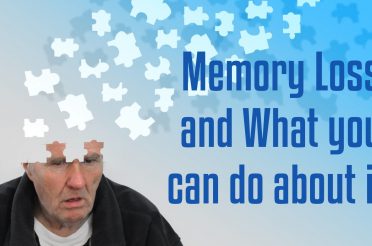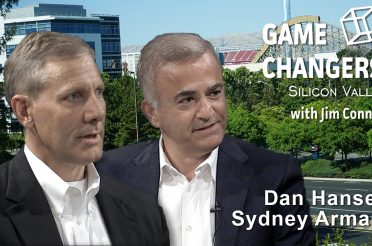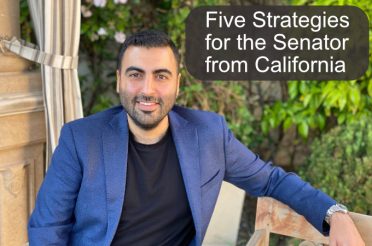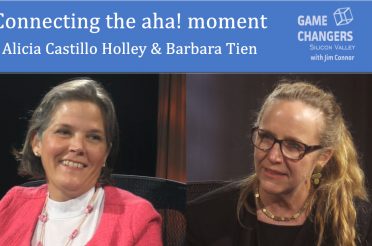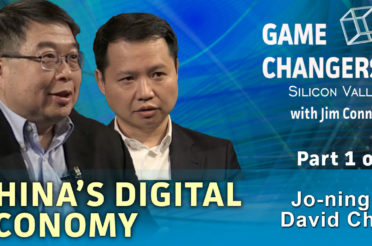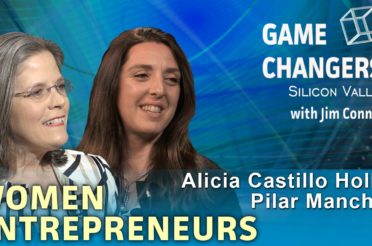Overview
This conversation with Jamie Rhodes, the founder of the Central Texas Angel Network and an active angel investor group, based in Austin, TX, is about the importance of product-market fit and the importance of trust relationships, with customers and investors.
The story begins with an accelerator hosted by Texas State University and a group of local mentors and advisors who came together to fund a university startup, SioTeX . The company ’s technology was a method to process rice hulls, which are a waste product, into a high-grade industrial additive called Silica.
After the initial round of startup funding, the company began to work on commercializing the production of Silica for the Paints and Coatings manufacturers. Silica is used in the production of paint.
As the sales and marketing process engaged with the paint manufacturers in the U.S., there was “little or no response”. Eventually, the company learned from these prospective customers, that their product did not meet the specifications required by the paint manufacturers.
At this point, two years after the initial funding, the company faced a clear dilemma. They were low on cash and had not found traction in the primary market as defined by the original team. And just one more issue, the CEO had decided to leave the company and pursue some other interest.
The dilemma for the investors was: Is it time to walk away or put more money into the company on the hope that a viable market fit would be found.
In other words, the investors had to decide if it was time to hold ‘em and invest more money or time to fold ‘em, and walk away and let the company fold from insolvency.
Join me with or guest, Jamie Rhodes, who was an early mentor to the company, invested in the company and was on the Board of Directors. The other board members and the shareholders convinced Jamie that he was the best person to take over the role of the CEO and hopefully turn the company around. For more information on the company and it’s soil enrichment products, go to www.RecycleSil.com
Transcript
Transcript of the show
Jim A recent United Nations study has projected a world population of 9.1 billion by 2050 just 30 years from now which will require a 70 percent increase in our food production. So the question is who is doing the research applicable to food production, quality, and safety and how does that research get vetted and commercialized.
My name is Jim Connor. Welcome to Game Changers Silicon Valley. Tonight’s show is about how university research was utilized to transform a waste product into a valuable soil enhancement. My guest is Jamie Rhodes CEO of SioTeX, a company based in Austin Texas that produces a specialized compound for plant nutrients. Jamie welcome to the show. Good to see you. Can you give us an overview of how you got involved with SioTeX?
Jamie Nice to be here. We. Originally this technology came out of Texas University, Texas State University actually, Central Texas we have the University Texas at Austin, we have Texas A&M and Texas State University. This was a product of an innovative program. Texas State has, for Ph.D.’s and Material Science that incorporates a part of an MBA into it. So it’s pretty unique. I get involved with a business team from that program.
Jim But you were acting as an investor is that correct? A mentor-investor?
Jamie Well so mentoring the team and then as the technology came together I invested with a number of friends of mine. There’s an excellent angel investment fund in Houston the Texas Halo fund. They got interested I’m an investor in that fund. They invested in technology. I took the preferred stockholders’ board seat and for the first two years of the company that seed round was used to for R&D and in to advance the technology. At the end of a couple of years, the CEO was ready to do something else. I moved from the board seat into the CEO role and at that point we still hadn’t found a market for this material.
Jim Let me ask you then so the material was originally designated or targeted towards, is it plants? I’m sorry paints and coverings.
Jamie Yes what we’re doing is making high-grade silica and high-grade silicas are used as thickener in paints, coatings, makeup, food, and we were we thought this would be appropriate for that market. We found that the chemical properties needed tweaking we needed continuous R&D to improve that and to fit that market well. And while we were working on that we found the agriculture market and the agriculture market has recently recognized that Silica is an important soil additive and that our silica was a great match for their needs because our silica is soluble it’s a neutral Ph.D. And the EPA at the same time recognized that our high-grade silica was important because what are our process is not only taking a trash, rice hulls, which are a waste product from the rice milling process and turning it into pure biogenic amorphous silica. But our process is very environmentally friendly.
Jim So, let me for the purpose of our audience, because we did have a conversation earlier. You take rice and when rice is harvested there is a hull or some kind of wrapper around it correct.
Jamie Yes.
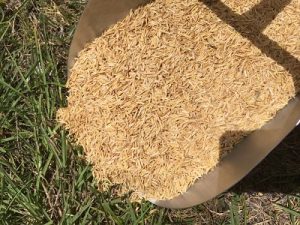 Jim And if you peel that off then you’ve got brown rice.
Jim And if you peel that off then you’ve got brown rice.
Jamie Yes.
Jim And if you mill that then you’ve got white rice correct. And so what you’re doing is you’re taking the hull this wrapper if you will and peeling that off one way or another and then you’re in which is a pure waste product right?
Jamie It is it’s used for chicken bedding and things like that and most of it’s burned or buried. The bran has some value because there is protein in it but the hulls really don’t.
Jim And so you’re taking that and you’re doing some process some magic if I can suggest that and then you turn it into this silica which is very high-quality silica. I don’t know if you did that on purpose or by accident you find it was a great fit for the equatorial agriculture technologies your agriculture applications. Is a certain type of crop that does well with it?
Jamie Well there are a number of crops that need silica and there are one group is called silica accumulators and they can they test the actual stalks and find that they have lots of silica in them. So it’s clear they get it from the soil and then there are other crops that are not silica accumulators but stronger cell walls can be very advantageous in and fighting off stress and disease. So silica is not important for all crops and some soil has silica in it but there is a number of crops that silica is very important for a healthy crop. And the silica there isn’t silicon soil either because there wasn’t to begin with or because previous crops have taken the silica out of the soil.
Jim You’ve got such a fascinating story about how you pivoted from the paints to the silica for the agriculture and how suddenly you were such a hit. Tell us about that.
Jamie Well. So we were out talking to the painting coatings market. Like good entrepreneurs talking to our future customers and we actually got a strange reaction from them. And. It took a while to create a trusted relationship with a few of the paint companies and what we realized was the chemical properties that we thought the material had were not what they were seeing, the scientists at the paint companies were seeing. And it’s not up to them to come back and give us feedback in and talk to us about the properties of our product. They have a line out the door of people who have new materials that might be useful in their products. And so they just take our material and stop talking to us. We finally figured out that we didn’t have the properties that we thought we did and in the process of trying to determine how much more R&D it would take to create the right properties and we are still doing that and we will, in the end, serve those markets; we found the agriculture world and our material is right “as is” for agriculture it has the right properties and that solubility.
Jim So as soon as you got through the testing phase with the first two companies they said we want hundreds of pounds of this stuff.
Jamie That’s right. We were in R&D mode. We’re making about 50 pounds a month. And our first two agriculture customers tested it and said We love it. We need thousands of pounds a month. And we said well we can’t do that. And so that was beginning last year we went out and started a round of funding and we’re Angel funded and started a round of funding in order to increase our capacity our manufacturing capacity. We got the funding. We’ve done that we’ve increased our capacity with the specialized equipment that we use and now we’re ramping up production and we’re doing the other half of the equation which is proving the market is there, will pay what we think they’ll pay. And that’s that process is starting and it’s going very well so far.
Jim So you’re you’ve got a lot of business experience you’ve been an investor for years you have credibility with your investment team. I have to ask you because as entrepreneurs struggle with the investors, they struggle to tell them incredible things that tell them everything. Let there be no surprises. How did you work with your investors? I mean, where like “you know me I know you I’m going to tell you like it is” or did you do anything else differently.
Jamie: Well it was tricky because I did know all these investors as an investor. And so now I was in front as an entrepreneur. And. What I needed to do was, show them that I was being transparent and that I had all the numbers the pro forma financials for example that they were used to seeing but I made the point as one seasoned entrepreneur to and seasoned investor to other investors that look we all know these numbers are made up and so I made up the numbers because if I didn’t show them the numbers they’d think I was up to something but then I explained how these numbers were concocted. Here were the assumptions. We don’t know if those assumptions are correct. And as we go along very quickly we’ll find out which assumptions were right and which were wrong and that will change the proformas, the financial outlook. And I was lucky because they knew me and because I’ve done this many times before. They trusted me. They knew that I was indicating where things are that we all investors all of us investors asked for that are really pure speculation on the entrepreneur’s part and they cut me slack on that. And that worked out very well.
Jim: So you think that you’re saying suggesting that your experience level and knowing when and when and when investors know the entrepreneur really doesn’t have these answers. You just admitted to it. Is that correct?
Jamie That’s exactly right.
Jim: Okay. So you ramped up production little bit now and you’ve now got your production going. How many pounds a month are you producing now.
Jamie So are our current target is to hit a thousand pounds a month, we’re on course to do that. And then our target is to go to 2,000, 3,000, 4,000, somewhere about five or six thousand pounds a month. We think we’ll hit cash flow break even. And that’s always been our target and it’s now a race to see if we do that before we run out of the current round.
Jim And you’re keeping these two customers are happy by and large>?
Jamie Those customers are happy we’re finally about to have enough capacity so that we go out and do more sales and marketing. We’ve talked to many people and they’re very excited about our product and interested in buying it. But you can’t go very far with those conversations when you can’t supply them. Now we’re about to be able to do that.
Jim: OK. So I wanted to ask about a new area here, and we this briefly touched on. You’ve been selling through a wholesaler basically correct. (Yes). They take your product they’ve got your brand on it and then they resell it, break it down in bulk or whatever it might be, you’re thinking about going to the consumer market B2C direct to consumer. Is that correct?
Jamie Yes. So the wholesalers have been excellent because they have helped educate the Gardner on that and so we treasure that relationship. We don’t want to cannibalize it. But beyond that region that they’re serving, we do want to reach the consumer ourself. So we’re about to become a B2C ( Business to Consumer) company. Lots of investors, certainly venture capitalists in the past haven’t liked B2C. We think it’s the way to go. I think it’s the best margins and we think we can reach many consumers. Interestingly enough we have found that Colorado, California, Washington, and Oregon are very interested in our product and we’re working on wholesalers that we might have resell our material versus going direct consumer.

Jim So if I may be more direct and like, what you’re finding is the cannabis growers are very interested in your product. Is that right?
Jamie Yes we are.
Jim And is that it must be a deep market for you to go to.
Jamie Yes we think so it’s a huge market. And once again silica makes plants stronger produce more by reducing their reaction to stress and disease and some high-value markets. It’s certainly important to them.
Jim In our previous show we talked about with two guests that you kind of what we’re able to watch about how farmers or growers are making decisions based on the highest value crop they can get out of the technology they have. I think that you’re an enhancement into that decision making cycle is that an accurate read.
Jamie Well it’s absolutely true and it depends on the crop and research is figuring that out scientists to LSU, for example, are working on that. And but as the science evolves more crops seem to benefit from silica.
Jim How much of it do you have to use in that area.
Jamie Well the great news is it doesn’t take much. So our usage instructions say a quarter of a teaspoon to a gallon of water. So if you buy a pound of our material that’s about nine hundred gallons of treatment.
Jim Really 900 gallons. That’s remarkable. What’s the next step are you going to go to the direct to consumer or are you going to finish building out a few a couple more wholesalers.
Jamie As capacity increases now we’re going to find out we’re going to try both those and see what works well and if we can get capacity if we increase capacity and we serve both those markets we’re going to do that. We do think in the long run there are other products to be made with natural silica like ours. So we’re not tied to simply the agriculture industry. As we learn as we adjust our process. We will be able to fine-tune the characteristics the chemical characteristics so we’ll fit other applications perhaps paints and coatings and then I think with creativity there are a number of applications for silica that haven’t been addressed yet.
Jim I wanted to ask one more area here which is always a critical area for entrepreneurs. How have you conducted your investor relations? What level of communication did you keep because I have heard and I see entrepreneurs who go out there and get funded and they stop communicating? They took the money and time to go do something. This is a really overlooked area and not served well and I want to get your perspective on it.
Jamie Well I think you’re absolutely right. There are many entrepreneurs that do not that are not good at Investor Relations it’s a critical part of it. I spend a lot of time with it. I happened to actually have about 100 angel investors which are a lot more than your typical entrepreneur. So to some degree, I treat it like I’m running a public company and it’s very difficult very time-consuming. Every time I send out information to the investors there are always a few people that don’t understand it and so they have to get on the phone immediately thinking what’s going on and I’ve taken time to explain it to them and some of them I’ve learned, I’ll even call them as the e-mail goes out and say let me tell you what the latest state of things is. Investor Relations is critical and I would add one other area that’s overlooked by first-time entrepreneurs and that’s governance. So I have built a stellar board and the board is tremendously helpful to me. The board can fire me and the board may fire me someday and if they do I believe they know they’re making smart decisions. By the way long before they fire me I’ll be talking to them about what can we do better. What am I doing good and wrong and there will be no surprises? But governance just like investor relations I think is often overlooked.
Jim Did you ever think while you were an investor, you’ve been investing for a long time, you were going to move back and become a CEO entrepreneur again.
Jamie Well I didn’t it was I had to do this from my board seat. The previous CEO was ready to not be a full-time CEO anymore and so I moved in to figure out, do we have something here or are not, because my friends and I had invested in it and the great news is we do and we’ve scaled the process successfully which is very exciting because that was the biggest risk. And the market, we don’t know the answers in the market yet, but the market is still beating down our door.
Jim There was one issue I overlooked I’ve been wanting to ask you this for a while even while we were having our discussion today is what type what would you say about the IP agreement you had with the university. Did you learn anything from that or would you do it the same you know where you had to license the technology?
Jamie Well, Texas state that we license this from has been very entrepreneur-friendly. I’ve worked with them for a long time. However, these agreements are difficult so I’m not sure there’s anything I’d do differently. Well. There are terms that would make sense but they frankly don’t make sense until you’re having some success. And now that we’re on our way to success there are some terms that I wish were different. But overall their entrepreneur-friendly terms, they’re win-win terms for the university and for us.
Jim And is this commercialization of intellectual property at the university level. Growing in Texas is this or were you kind of an outlier that took it because you have to be an investor, on the board and then decided to keep it going when it looked like it might fail.
Jamie Well I had a fair amount of experience with it and commercializing technology out of universities is extremely difficult. Our company is a perfect example of how no matter how hard the professors the technologists try and express where things are, we are. It’s always two or three years earlier, the technology is than where it looks like it is. So it’s taken more years of R&D for our product than anybody thought. And that’s a common scenario. And that is one item on a long list of difficulties of commercializing university technology.
Jim Well I really want to thank you. You’ve been just fantastic in the information you’ve shared with us your transparency. I really appreciate you coming all the way here from Texas to be part of the show. And let’s let you let me ask you to give our audience a way to follow up if they have
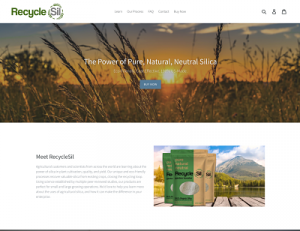
the interest to learn more about the company or its products.
Jamie Sure. So we can be contacted at info@RecycleSil.com. The product can be found at www.RecycleSil.com. Welcome everybody to come to take a look.
Jim If you buy the product on the web page or will you be able to buy the product on the web.
Jamie Yes you can.
Jim So all those individual consumers out there could take a look at this and try it out. Absolutely we’d love for them too. Well, I know some people are going to try it out so well once again. Thanks so much. I really enjoyed it. I wish you every success going forward.
Jami Thank you very much, Jim.
Jim This is Jim Connor. Thank you for joining us for this week’s episode about ag tech. Each week will address an area of innovation that may emerge as a game-changer of tomorrow. You can follow us and subscribe to the shows at gamechangers.TV. We look forward to your continued interest and participation in upcoming shows.
Contact / Podcast
Jamie Rhodes : info@RecycleSil.com
Website Link - : www.recyclesil.com
You can listen to the podcast at this link
Texas Hold ’em for Angel Investors
or subscribe to the podcast by searching on your preferred podcast app for
Game Changers Silicon Valley

